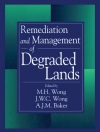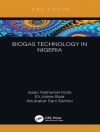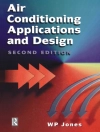The book provides a comprehensive overview of the technologies and processes involved in renewable energy generation, with a specific focus on their role in improving the circular economy. It offers all the necessary information and tools to help readers select the most sustainable renewable energy solution for different conditions.
Exploring real-life examples, the book delves into the practical applications of the circular economy in the renewable energy sector. It takes a multi-faceted approach, examining the circular economy from various perspectives and incorporating methods such as lifecycle assessment, sustainability assessment, multi-criteria decision-making, and multi-objective optimization modes. Furthermore, the book explores the concept of blockchain, hybrid renewable energy models, technologies, and implementation. It also investigates the critical factors and key enablers that influence sustainable development in this field. By doing so, it not only facilitates the transition to a circular economy but also highlights the shift in recent research, trends, and attitudes towards a more scientifically grounded approach.
The primary objective of this book is to compile research specifically focused on the circular economy in renewable energy. By providing researchers and policymakers in the energy sector with the necessary scientific methodology and metrics, it enables the development of strategies for a sustainable transition. This book serves as a valuable resource for students, researchers, and practitioners seeking to deepen their understanding of energy planning and the current and future trends of biofuel as an alternative fuel.
Зміст
Chapter 1: Transition from a Linear to a Circular Economy.- Chapter 2: Circular economy and energy transition.- Chapter 3: Circular Economy and Renewable Energy: A Global Policy Overview.- Chapter 4: Circularity and sustainability performance of hybrid renewable energy systems: exploring the benefits and challenges behind the hybridization of wind farms.- Chapter 5: Circular Economy to Decarbonize Electricity.- Chapter 6: Circular Economy in Materials to Decarbonize Mobility.- Chapter 7: Waste to energy in circular economy.- Chapter 8: Biofuels in Circular Economy.- Chapter 9: Circular Economy and Climate Change Mitigation.- Chapter 10: Circular Economy Indicators and Environmental Quality.- Chapter 11: Circular economy approach to green energy: Agenda-Setting towards Indonesia’s Ambitious Renewable Electricity 2030.- Chapter 12: Biofuel Circular Economy in Environmental Sustainability.- Chapter 13: Accelerating the Transition to a Circular Economy: An Investigation on the Enablers of Blockchain-based Solar and Wind Energy Supply Chains.- Chapter 14: Circular economy and Energy efficiency: The role of the Energy Management Systems (En MS) in industrial SME.- Chapter 15: Energy decarbonization via material-based circular economy.












